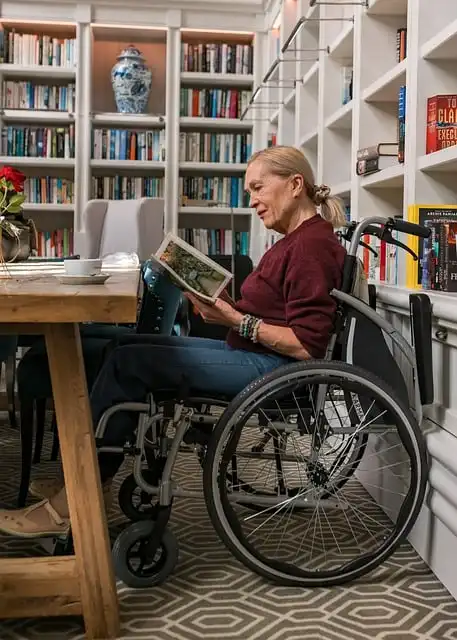13 things to know about long-term care planning

As the FLTCIP is not currently available to new applicants, I priced a similar policy sold by Mutual of Omaha using their online long-term care premium calculator.
Tomorrow is Friday the 13th! To boost your luck on this day, some people claim that you must discover a four-leaf clover. It has additionally been claimed that on now, you must use your clothes inside out to have less possibility of something bad occurring.
Although taking chances on Friday the 13th is an old superstitious notion, something that you ought to not gamble on is the possibility of requiring long-term care. Preparation for the possible need for long-lasting treatment will profit you and your family members in the adhering to 13 means:
Get your go out of the sand: Long-term care is needed often because of a situation such as “mama fell,” “my other half doesn’t appear to remember me anymore,” or “dad had a stroke.” This can take place to any person. People that need long-term treatment might at first remain in the home, for many there will come a time when specialist help or center treatment may become needed.
Autumn prevention may stay clear of lasting care: Falling is not a normal part of aging. You can avoid drops by doing the appropriate workouts, making your home much safer, getting regular wellness examinations, and a lot more.
The price of treatment is boosting: The Congressional Budget Workplace approximates that Medicaid spending for home and community-based services totaled $105 billion in 2020, and Medicaid investing for institutional treatment completed $68 billion. By 2030, that costs is expected to grow to $160 billion for HCBS and $80 billion for institutional care. Out-of-pocket costs and payments made by personal long-term treatment insurance policy strategies, the DoD, the VA, and state and city governments is approximated to have amounted to $76 billion in 2020 and will certainly grow to $104 billion by 2030 under current legislation.
Understand that Medicaid, not Medicare, spends for long-lasting care– if you certify: Medicaid is offered only to people who satisfy certain economic demands (with limitations on earnings and assets). Medicare covers care after a healthcare facility stay to help beneficiaries recover from a crash or a disease.
Caretakers of veterans must understand: You’re not the only one, greater than 5.5 million individuals act as casual caregivers for older/disabled veterans across America. Over nine million older adults have offered in the military. Veterans are usually eligible for benefits within and outside the VA system. Learn about sources for experts.
Currently, if you are reading this and thinking, I am as well young to worry about this, reconsider. There are benefits to acquiring lasting care insurance at a more youthful age. I bought a FLTCIP policy 19 years earlier, at age 47. It presently has a weekly advantage quantity of $1,604.54 ($6,953/ month or $229.22/ day), a $1,095-day benefit period (3-years) and a 3.9% automated compound inflation choice with a maximum lifetime benefit of $250,995.90. This policy has a 90-day “elimination duration,” which is the number of solution days needed prior to being eligible for advantages spent for by the policy. It resembles a deductible. My premium is currently $89.74 per month. There have been significant cost boosts considering that the time I purchased this policy, however I am paying much less each month now than I did after that. Instead of paying the greater prices, I devalued my plan from a five-year benefit duration with 5% rising cost of living security.
The cost of treatment is boosting: The Congressional Budget Office estimates that Medicaid costs for home and community-based services totaled $105 billion in 2020, and Medicaid spending for institutional treatment completed $68 billion. According to the National Institutes of Health and wellness’s National Institute on Aging, long-term treatment is explained as treatment that entails a variety of services created to fulfill an individual’s health or individual care demands when they can no longer perform day-to-day tasks on their own. Numerous individuals will certainly need lasting treatment at some factor. As the FLTCIP is not presently offered to new candidates, I priced a comparable policy offered by Mutual of Omaha using their on the internet long-lasting care costs calculator.
Individuals that need lasting care might initially stay in the home, for the majority of there will certainly come a time when professional aid or center treatment might end up being essential.
As the FLTCIP is not currently readily available to new candidates, I priced a similar policy marketed by Mutual of Omaha utilizing their on the internet long-term treatment premium calculator. These estimates are based on a MutualCare Secure Remedy plan with a 36-month benefit multiplier, 90-day removal period, 3% substance life time inflation, and companion premium allowance if suitable (the FLTCIP policies are all specific plans). At age 66 for a wedded female living in Florida, it would cost $977/ month for this plan today.
According to the National Institutes of Health’s National Institute on Aging, long-term treatment is called treatment that entails a variety of services developed to meet an individual’s health or personal treatment needs when they can no more do day-to-day tasks by themselves. Many people will need long-term care at some time. It can be difficult to anticipate exactly how much or what kind of care an individual may need.
You have actually made a strategy that will stick: Preparing a Living Will certainly that clearly mentions what medical therapies you desire, or do not desire to obtain if you can’t answer for yourself. Older legislation lawyers can help you develop a lawful structure to ensure that your economic and medical dreams are fulfilled.
Choose the treatment you desire: There are a selection of means to intend that consist of home alterations to make aging in position a choice, relocating to a neighborhood that has long-lasting treatment available needs to it be required, having conversations with family members who might be needed to supply treatment.
Do not wait also long to act if you are considering this kind of coverage to help you prepare for the possibility of requiring lasting care in the future. Hopefully, there will be information from OPM quickly concerning the return of FLTCIP.
1 care2 long-term care
« There is little consensus in Washington on spending following August recessLawmakers mull a fraud-focused scorecard for oversight »
